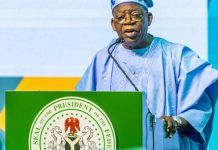Due to the negative return, investors continued to sell their naira assets, which resulted in a modest increase in the average yield on the federal government of Nigeria bond on Thursday.
Some experts of fixed interest instruments claim that the selloffs were bolstered by the financial system’s inadequate liquidity.
A decrease in the money market’s financing profile supported this, even as the Central Bank of Nigeria (CBN) removed a N2 billion cap on the amount that local banks and other approved dealers may deposit to earn interest in its Standing Deposit Facility.
The money market’s liquidity has been decreasing, which has caused the benchmark interest rate for short-term loans to rise. System liquidity was still scarce on Thursday following the CBN open market operation (OMO) debit.
Key money market rates, the overnight lending rate and the open repo rate, continued to climb, hitting 20.60% (up from 17.13%) and 20.08% (up from 15.92%), respectively, according to data from FMDQ.
This occurred following the N77.20 billion OMO auction that was held on Thursday being deducted from the system. Thus, in the OMO portion of the secondary market, the average yield remained constant at 12.0%.
There were areas of sell-side activity in the bond market. As risk sentiment changed as a result, this had an effect on the yield curve. The session ended with a 3bps increase in the average yield to 15.4%.
Fixed income experts said that the average yield shrank at the short (-6bps) end of the benchmark curve. The decline coincided with the need for the MAR-2025 bonds, which then lost 59bps.
However, yield increased at the mid (+10bps) and long (+5bps) segments due to sell-offs of the APR-2029 (+13bps) and MAR-2050 (+51bps) bonds, respectively.














